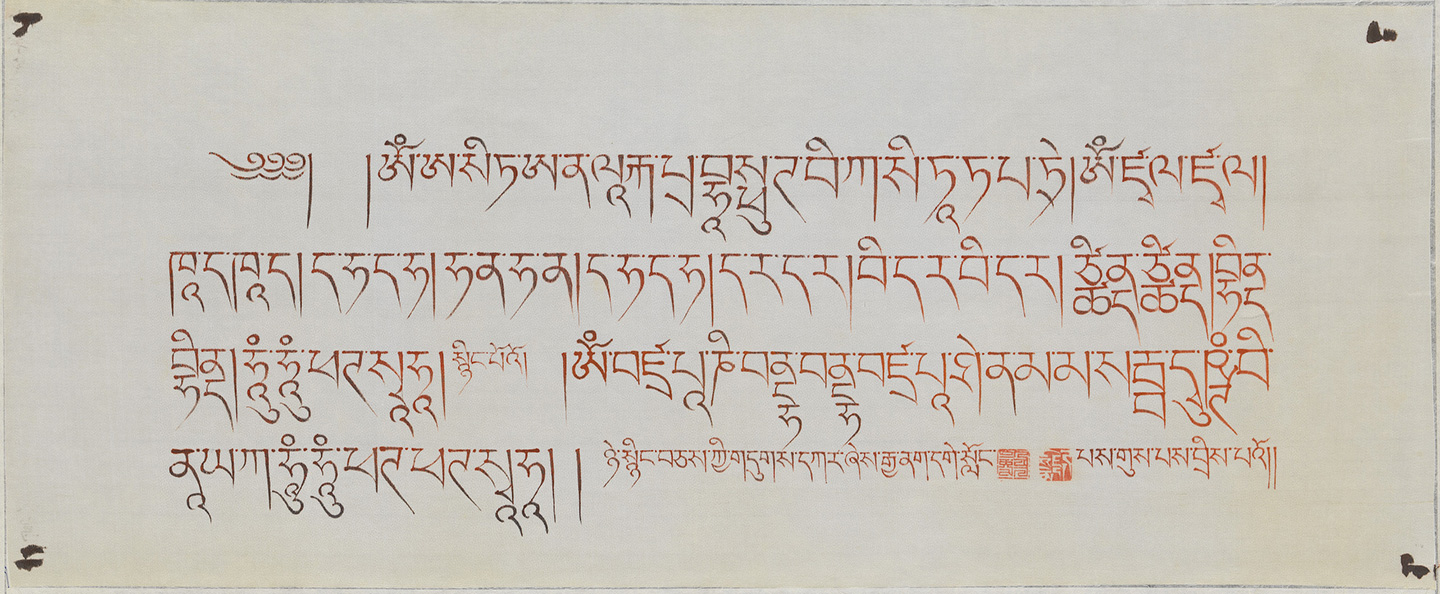Tibet was once known as Bod. Contact between Tibetan and Chinese Buddhism began during the early Tang dynasty. In the 13th century, when the Mongolian Yuan dynasty established its capital in Beijing, the state's adherence to Tibetan Buddhism led to a large influx of lamas into China, and Tibetan Buddhist texts and practices circulated widely at the inner court. The popularity of the religion spread beyond the court, and Tibetan-language Buddhist texts and mantras found their way into Chinese-language texts. For example, "oṃ-maṇi-padme-hūṃ" is the mantra that the Buddha uses to detain the Monkey King in the novel Xiyouji (Journey to the West), and many Chinese Buddhist classics, such as the Dashengjingzou (Mahāyāna Sūtra-and-Mantra) and the Daming Renxiao Huanghou Menggan Foshuo Diyixiyou Dagongdejing (Sūtra of Extremely Rare Virtues - Ming Empress Renxiao's Dream of Buddha), also include Tibetan Buddhist mantras. In addition, the iconography of Tibetan Buddhist deities and monks was used for the illustrations of the Chinese version of the Daweide Tuoluonijing (Mahābala-dhāraṇī-sūtra), and some calligraphers and scholars also used Tibetan mantras in their works.
Calligraphic rendition of the Dabaisangai Fomu Xinzou Jinxinzou (Uṣṇīṣasitātapatrā Mantra) in Tibetan script
- Ouyang Wuwei
Written in standard Tibetan script, the four lines in large font represent the heart mantra (lines 1-3) and the essential mantra (nye snying, lines 3-4) of the Uṣṇīṣasitātapatrā Mantra from the Shengrulai Dingjisuochu Dabaisangai Wunengshenghuizhemu Zuishengchengjiu Tuoluonijing (vphags pa de bzhin gshegs pavi gtsug tor nas byung bavi gdugs dkar po can gzhan gyis mi thub pa phyir zlog pa chen mo mchog tu grub pa zhes bya bavi gzungs), which states that anyone who recites, copies, or upholds the two mantras will be safe from demons, will see all their karmic obstructions eliminated, and will benefit from the blessings of the buddhas and the protection of guardians.
The last line is a miniscule signature that reads, "Respectfully written by ethnic Chinese bhikṣu Chos vphel (seal mark in vphags-pa script carved in relief) vjigs med (seal mark in Tibetan script carved in intaglio)." The bhikṣu's secular name is Ouyang Zhi (1913-1991), courtesy name Wuwei. He became a monk in 1934 at the Drepung Monastery in Tibet and took the Dharma name Chos vphel vjigs med. Ouyang wrote two books, Zangni Youji and Dawang Diaochaji. In 1952, he relocated to Taiwan, where he worked as an editor at the Academia Historica, taught Tibetan language, history, and culture at the National Chengchi University. He had trained many scholars of Tibetan Studies and Buddhist Studies. In Taiwan he is hailed as the "Father of Tibetan Studies."

